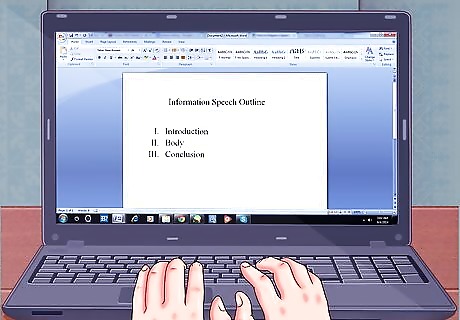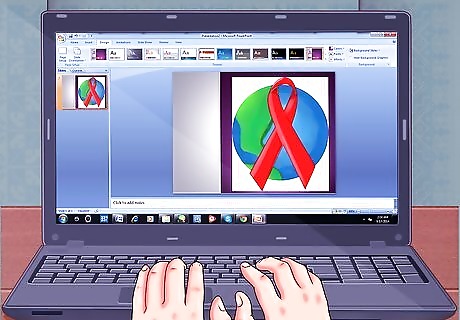
views
Researching Your Presentation

Determine your topic. Is it a question or a statement? Make the topic clear and concise; try to avoid generic topics that overwhelm in information, such as 'How does junk food affect the body?' Is this question in referral to the mind? The organs? Appearance? Is it targeted at children? Adults? Condense the question to a state where it’s completely clear to the audience and yourself what the oral presentation is about.

Decide on the tone of your oral presentation. Are you trying to convince the audience or simply inform them? The passion in your tone can distribute between a convinced audience and an informed one. Humor, empathy and factual tones are some of many which allows a speaker to connect with the audience and the topic.

Briefly research arguments for and against your topic. This allows the audience to observe both sides of the topic and feel as if they have made a fair judgement when convinced. Always make sure to rebut the arguments against the topic when trying to convince an audience. If speaking about the effect of junk food on an adult’s mind, include the increase of serotonin, a happiness hormone. Then inform the audience how fast the hormone drastically depletes to give out worse feelings. This gives the perspective that even the advantages of junk food are outweighed by the negative effects.

Research, research, research. Make sure your resources are reliable and always accredit information, "Research conducted by Neurologist Matthew Smith..." provides evidence to the credible sources used. Always try to provide statistics, events, personal experiences and conducted research to support your arguments. However try not to overwhelm your audience with information, as the speech can then become
Writing Your Script

Write the body of your script. It is sometimes easier to leave the introduction and conclusion last, as these are the most important to capture your audience. Plan out and write a paragraph for each argument. Try to leave the strongest arguments last as these are what the audience will most likely remember. Make sure to begin each argument with a clear description of the content such as. "The result of eating junk food has increased negative emotions such as depression, anxiety and low self-esteem". This gives the audience a quick outlook of what the argument is about. Always remember to state how the argument relates and supports the topic question.

Start the introduction. Always try to avoid introducing yourself unless it’s absolutely necessary! If it's a must, try to introduce yourself later in the introduction. The first words are paramount when capturing the attention of your audience and best when used with a definition, question, quote, statistic or statement. "You are what you eat...To what extent does this statement ring true? Does the food we eat define our thoughts and emotions? If we were to eat junk, would we become 'junk' ourselves?" If necessary, this is where you could include, "My name is ___ and I will be speaking about the effect on junk food on our minds." Then you include a brief out view of each argument you will be speaking about. Do not include any information about your arguments in the introduction.

Prepare a strong conclusion. Briefly summarize each argument but do not include any new information. Relate back as to how the argument supports the topic question and how they outweigh the opposing facts. The last sentence of the conclusion defines the power of your presentation and must leave an effect on the audience. A good ending to a conclusion can include the same as the beginning of an introduction and sometimes, using the same opening sentence as your concluding sentence can be very powerful in the right context. Some example concluding sentences include, "The entire process of the mind, changed by a simple bite of a cookie. Our entire body's control system, defined by our choices of food. The definite truth. You are what you eat."
Practicing and Performing

Prepare your cue cards. Do not paste your entire script on to the cue cards. Key words are your best friend in an oral presentation. Only having certain key words on your script allows you to easily track your train of words and gives you the opportunity to focus on your audience. Taking the effort to memorize your script allows you to keep eye contact with the audience and brings confidence to your speech. Reading from an entire script can easily cause you to lose your place and stutter. Also make sure they are the same size and only put important key words or those that are hard to remember. This allows you to easily flip through and read off the cue cards.

Use the aid of visual images or videos if allowed. Having PowerPoint presentations that contain important phrases, statistics or images in relation to your script allows the audience to visualize the information, making it easier to follow along.

Be confident and remember to breathe. And always make sure to check P.V.C before your speech. PowerPoint, Volume and Cue cards.
















Comments
0 comment